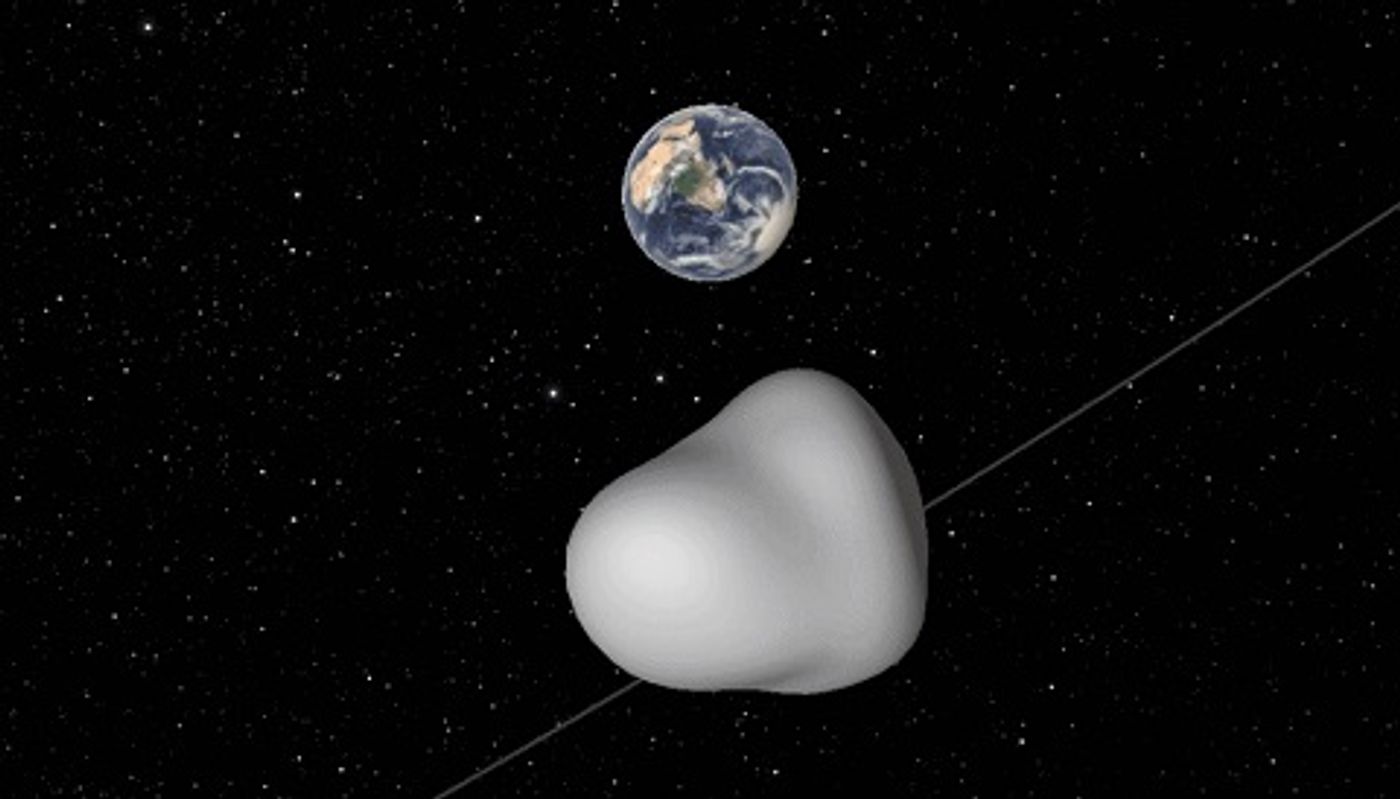A House-Sized Space Rock is About to Get Uncomfortably Close to Earth
Astronomers are closely monitoring an asteroid dubbed 2012 TC4, which will make an uncomfortably-close encounter with the Earth on Thursday, October 12th.
Image Credit: NASA/JPL
2012 TC4 will pass over the southern Pacific Ocean within just 31,180 miles of Earth’s surface. Comparatively, the Moon orbits the Earth from 238,900 miles away, and NASA’s OSIRIS-REx spacecraft recently flew past Earth from a mere 11,000 miles away.
The formidably-sized space rock has tangoed with Earth countless times previously. From early observations, astronomers calculate that it measures anywhere from 26-85 feet across – or almost the size of a house.
2012 TC4 is also a fast rotator, completing a full rotation within just an hour. This gives astronomers an unprecedented chance to study the asteroid’s physical features up close with Earth-based telescopes.
2012 TC4 isn’t quite large enough to make it through Earth’s robust atmosphere without burning up, but it is approximately the same size as the space rock that exploded over Chelyabinsk, Russia in 2013. The event generated shockwaves powerful enough to collapse roofs and shatter windows, injuring thousands of people in the process.
Astronomers seem certain that 2012 TC4 poses no risk of collision with the Earth on Thursday. Even if it did, it’s smaller than the rock that exploded over Chelyabinsk and will pass over an unpopulated area.
Related: Regarding asteroid collision, size really does matter
Each flyby the asteroid makes changes the asteroid's path of movement ever so slightly because of the Earth's gravity tugging on it. With that in mind, astronomers want to study the asteroid to develop more precise orbital trajectory models so they can discern when future encounters with the Earth will take place.
It's difficult to keep track of all the space rocks residing the shadows of our solar system because of the sheer number of them. Fortunately, however, modern astronomy propagates asteroid research by enabling experts to study those that come close enough to Earth for observation.
Source: Sky & Telescope









